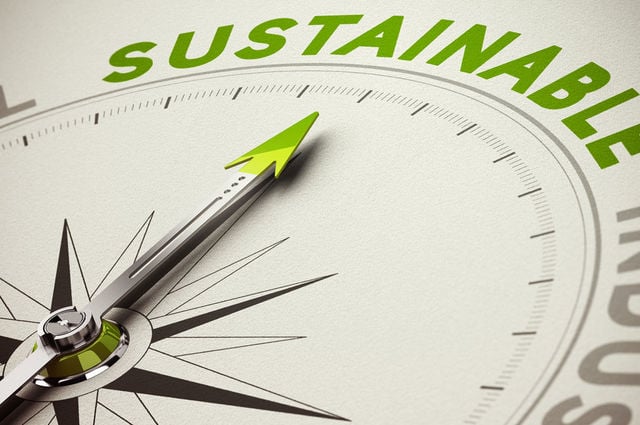0 experts shared their view
Doughnut, circular and closing loops and the Sweet Spot
If we were to take a planetary selfie, what would we see? The Planetary Boundary framework brought forward by the Stockholm Resilience Centre more than a decade ago is a good way to interpret that selfie. Out of the nine boundaries, six are being transgressed, including most recently green water cycle [1].
If we were to take a humanity selfie, what would we see? Here the Doughnut Economics model [2] is a great tool to interpret our shortfalls and overshoots. Added to the nine planetary boundaries are twelve social dimensions from agreed minimum social standards from proper housing and nutrition to access to healthcare and education.
The sweet spot is thus to develop and cement strong social foundations within the planetary boundaries.
Easier said than done; nations are struggling to decouple development from resource use [3, 4]. Businesses are in the same boat. Although research demonstrates that a circular approach improves performance on the three pillars of sustainability [5, 6], implementation has been slow. This is due to numerous barriers that include but are not limited to lack of resources or technical skills all the way to absence of government support towards a circular economy transition [7].
How about the hospitality sector? Is circularity in hospitality a myth or reality? What are the circularity gaps?
Not a myth yet, not a reality for most.
And the following flows can be implemented as a strategy moving forward. Based on the work by Bocken et al. [2016], the 2021 Circularity Gap Report [9], proposes four strategies (pp.25-26) to achieve greater circularity and regeneration:
Narrow flows—Use less: This is already achieved in hospitality design when low embodied carbon material is used, when upcycling is implemented and natural light is maximized in hotel properties.
Slow flows—Use longer: The hotel sector is hungry in resources throughout the lifecycle of a building, particular in the regular FF&E upgrades, refurbishment and renovation cycles. The use of durable, long lasting material coupled with a plan for reuse, repair and return (see 'Use again' here below) should be the name of the game here.
Regenerate flows—Make clean: The hospitality sector has so many opportunities to implement renewable energy production on- or off-site while actively participating in a community-supportive and regenerative agriculture via its food supply tapping into the 'Make clean' strategy.
Cycle flows—Use again: Picking from 'Use longer' strategy, recycling, reusing, repairing, composting are already well-established at many properties. Here creativity goes a long way to achieve outstanding results.
Implementing a circularity strategy helps tackles SDG12 on Responsible Consumption and Production (in particular Target 12.2, 12.3, 12.4 and 12.5).
Bonus question:
- What are the costs and benefits associated to circularity?
Some good research has been published on the topic already (reach out!).
[1] Wang-Erlandsson, L., Tobian, A., van der Ent, R. J., Fetzer, I., te Wierik, S., Porkka, M., Staal, A., Jaramillo, F., Dahlmann, H., Singh, C., Greve, P., Gerten, D., Keys, P.W., Gleeson, T, Cornell, S. E., Steffen, W., Bai, X., Rockström, J., (2022). A planetary boundary for green water. Nature Reviews Earth & Environment. https://doi.org/10.1038/s43017-022-00287-8
[2] Raworth, K. (2017). Doughnut Economics: Seven Ways to Think Like a 21st-Century Economist. Random House.
[3] Wackernagel, M, Hanscom, L, & Lin, D. (2017). Making the Sustainable Development Goals consistent with Sustainability. Frontiers in Energy Research, 5 (18). doi: 10.3389/fenrg.2017.00018
[4] GGRi (2022). The Circularity Gap Reporting Initiative: a global score for circularity. https://www.circularity-gap.world/
[5] Fonseca, L.M., Domingues, J.P., Pereira, M.T., Martins, F.F. and Zimon, D. (2018). Assessment of circular economy within Portuguese organizations. Sustainability, 10(7), 2521. https://doi.org/10.3390/su10072521
[6] Guldmann, E., & Huulgaard, R.D. (2020). Barriers to circular business model innovation: A multiple-case study. Journal of Cleaner Production, 243, 118160. https://doi.org/10.1016/j.jclepro.2019.118160
[7] Vermunt, D.A., Negro, S.O., Verweij, P.A., Kuppens, D.V., & Hekkert, M.P. (2019). Exploring barriers to implementing different circular business models. Journal of Cleaner Production, 222, 891–902. https://doi.org/10.1016/j.jclepro.2019.03.052
[8] Bocken, N., de Pauw, I., Bakker, C. & van der Grinten, B. (2016). Product design and business model strategies for a circular economy. Journal of Industrial and Production Engineering, 33(5), 308-320. doi:10.1080/21681015.2016. 1172124
[9] GGRi (2022). The Circularity Gap Report 2021. https://www.circularity-gap.world/2021

